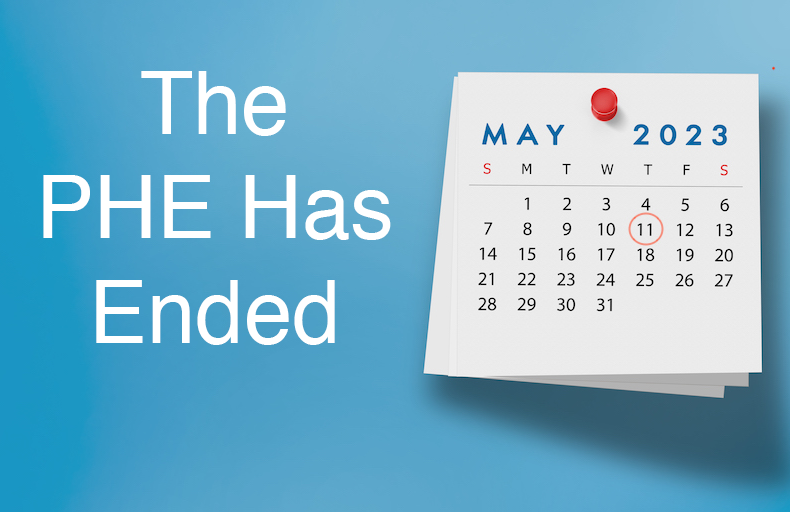The public health emergency (PHE) ended May 11, 2023. Some services, waivers, etc. expired on that date, some were extended, and some were extended with qualifiers. Here’s what you need to know when it comes to telehealth.
HIPAA and Telehealth
All platforms and programs must now be HIPAA compliant. Enforcement and penalties have resumed. During the PHE, lesser encrypted platforms (e.g. Skype, Facetime) were allowed. Now, all telehealth services (including audio only) will need to be provided using HIPAA compliant platforms. You can read more here: https://www.hhs.gov/hipaa/for-professionals/special-topics/hipaa-covid19/index.html
Medicare and Telehealth
Centers for Medicaid and Medicare Services (CMS) extended many Medicare PHE services of telehealth through December 2024, such as:
- People with Medicare can access telehealth services in any geographic area in the United States, rather than only those in rural areas.
- People with Medicare can stay in their homes for telehealth visits that Medicare pays for rather than traveling to a health care facility.
- Certain telehealth visits can be delivered audio-only (such as a telephone) if someone is unable to use both audio and video, such as a smartphone or computer.
The expanded evaluation and management codes Medicare allowed to be provided without supervision under the primary care exception ended May 11.
Additionally, after December 31, 2024, when these flexibilities expire, some Accountable Care Organizations (ACOs) may offer telehealth services that allow doctors and other practitioners participating in the ACO to care for patients without an in-person visit, no matter where they live. If a health care provider participates in an ACO, individuals should check with them to see what telehealth services may be available.
View the list of all covered CMS telehealth services here: https://www.cms.gov/medicare/medicare-general-information/telehealth/telehealth-codes
Medicaid, CHIP, and Telehealth
Medicaid and the Children’s Health Insurance Program (CHIP) telehealth flexibilities vary by state: some are tied to the end of the COVID-19 PHE, some are tied to state PHEs and other state emergency declarations, and some had been offered by state Medicaid and CHIP programs long before the pandemic. Post-PHE, Medicaid and CHIP telehealth policies will continue to vary by state. Here are some Medicaid resources for each state in our region that may be useful:
Arkansas:
Mississippi:
https://medicaid.ms.gov/preparing-for-the-covid-19-public-health-emergency-unwinding/
https://medicaid.ms.gov/late-breaking-news/
https://medicaid.ms.gov/wp-content/uploads/2023/04/DOM-UP-Plan_March-2023.pdf
Tennessee:
https://www.tn.gov/tenncare/information-statistics/unwinding-the-phe-for-partners.html
Private Health Insurance and Telehealth
Private health insurance coverage for telehealth and other remote care services vary by private insurance plan and by post- PHE. When it covers telehealth and other remote care services, private insurers may impose cost-sharing, prior authorization, or other forms of medical management on such services. For additional information on an insurer’s approach to telehealth, patients should contact their insurer’s customer service number located on the back of their insurance card.
Drug Enforcement Administration (DEA) Rules and Telemedicine Prescribing
The DEA and SAMHSA have issued a temporary rule extending the controlled substance telemedicine flexibilities through November 11, 2023. Further, practitioners who have established relationships with patients via telemedicine on or before November 11, 2023, may continue prescribing controlled medications to these patients without conducting an in-person medical evaluation regardless of the practitioner being/not being registered with DEA in the state in which the patient is located until November 11, 2024. The DEA and SAMHSA plan to issue final rules by November 11, 2023.
Read more here: https://www.samhsa.gov/newsroom/press-announcements/20230509/dea-extend-covid19-telemedicine-flexibilities-prescribing-controlled-medications
The NCTRC have a huge collection of “End of PHE” resources. You can view them here: https://telehealthresourcecenter.org/collections/end-of-the-public-health-emergency/
Sources:
https://www.aafp.org/pubs/fpm/blogs/inpractice/entry/covid-phe-end.html





